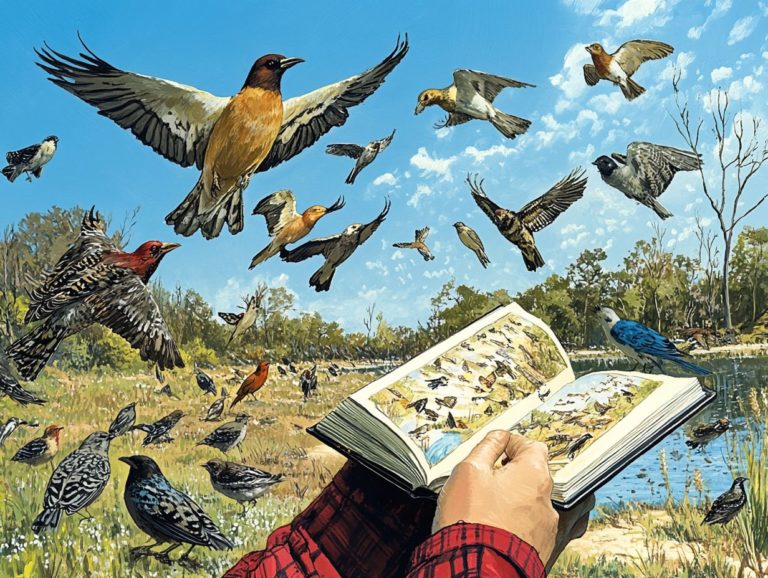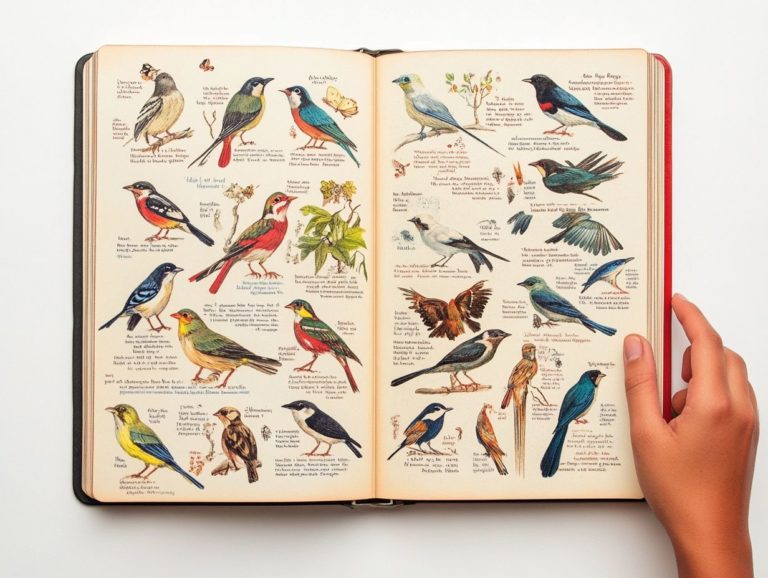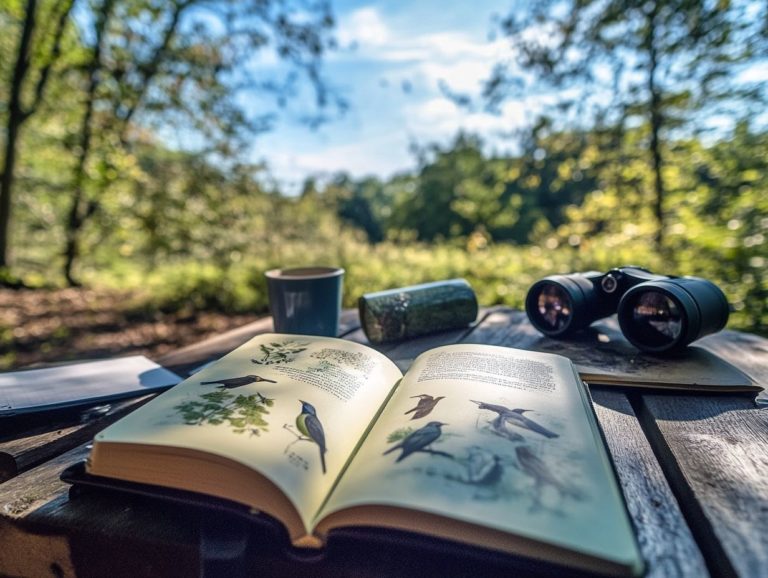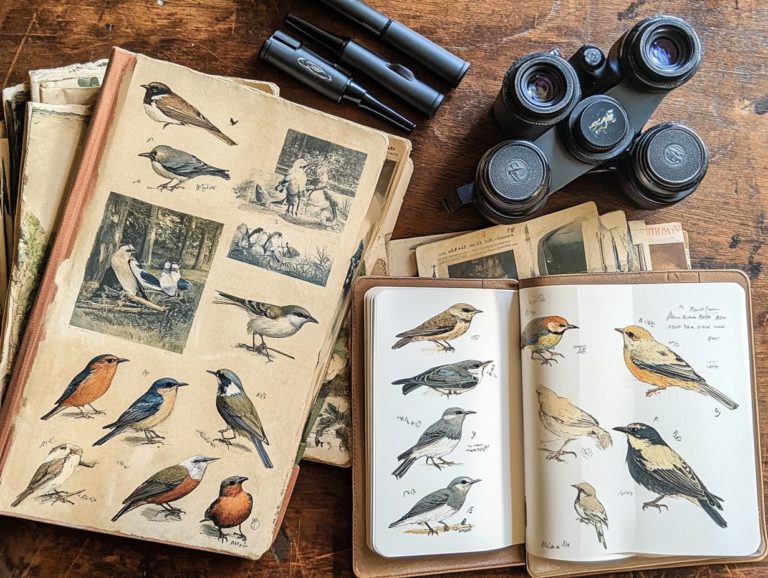Field Guides for Rare and Endangered Birds
Birds are among the most enchanting creatures on our planet, yet numerous species are teetering on the brink of extinction.
Understanding rare and endangered birds is essential for their survival and for preserving biodiversity.
Get ready to explore the unique traits, habitats, and challenges these fascinating birds face!
Discover conservation efforts, insightful birdwatching tips, and ways you can actively contribute to their protection.
Embark on a journey to uncover the fascinating world of these remarkable avian species and see how your actions can truly make a difference.
Contents
- Key Takeaways:
- 2. Identifying Characteristics of Rare and Endangered Birds
- 3. Habitat and Distribution of Rare and Endangered Birds
- 4. Threats to Rare and Endangered Birds
- 5. Conservation Efforts for Rare and Endangered Birds
- 6. How to Use a Field Guide for Rare and Endangered Birds
- 7. Tips for Birdwatching and Identifying Rare and Endangered Birds
- 8. Top 10 Rare and Endangered Birds to Look Out For
- 9. How to Report Sightings of Rare and Endangered Birds
- 10. Resources for Learning More About Rare and Endangered Birds
- Why Is It Important to Protect Rare and Endangered Birds?
- What Are the Most Common Threats to Rare and Endangered Birds?
- What Can Individuals Do to Help Protect Rare and Endangered Birds?
- What Are Some Lesser-Known Rare and Endangered Birds?
- How Can Citizen Science Projects Contribute to the Conservation of Rare and Endangered Birds?
- What Are the Long-Term Effects of Losing Rare and Endangered Bird Species?
- Frequently Asked Questions
- What are field guides for rare and endangered birds?
- Why are field guides important for rare and endangered birds?
- Are field guides only for experienced birdwatchers?
- Do field guides cover all rare and endangered bird species?
- Can I use field guides for rare and endangered birds during any season?
- Are online resources a good substitute for field guides for rare and endangered birds?
Key Takeaways:
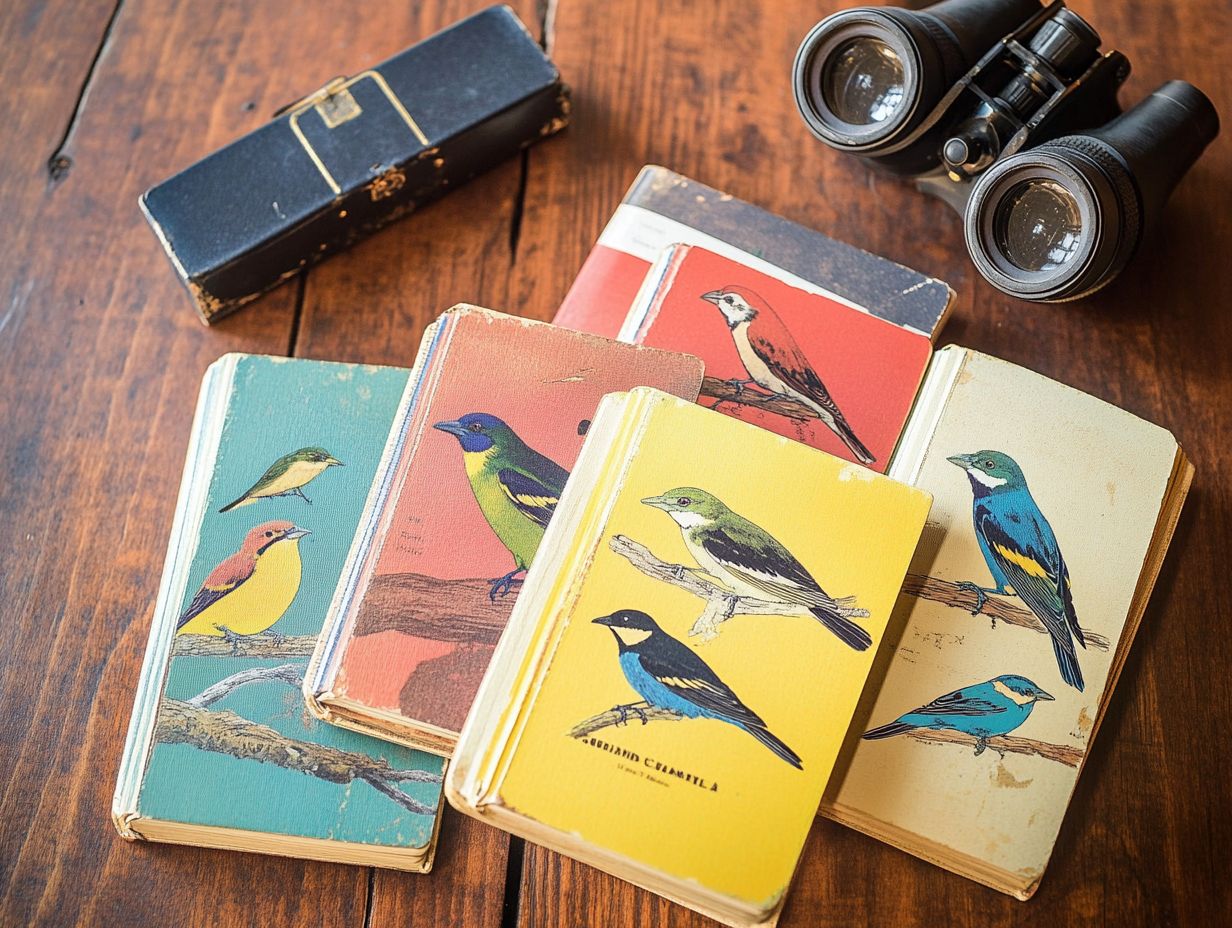
- Rare and endangered birds are vital for the ecosystem, making their protection crucial for biodiversity.
- Common threats to these birds include habitat loss, climate change, and poaching.
- You can help protect rare and endangered birds by supporting conservation efforts, reporting sightings, and being a responsible birdwatcher.
2. Identifying Characteristics of Rare and Endangered Birds
Identifying the characteristics of rare and endangered birds is crucial for effective conservation and field studies. These features vary significantly among species, including differences in feathers, sounds, and behaviors. By focusing on these aspects, you can improve your skills in recognizing and appreciating these unique avian wonders.
Take the California Condor, for example. Its vibrant feathers, with distinctive black colors and striking white wing patches, truly set it apart from other birds. The melodic calls of the K k p , a nocturnal parrot from New Zealand, are not only mating calls but also vital for establishing territory. The elaborate mating dance of the Greater Sage-Grouse deepens our understanding of these birds lifestyles.
Consulting field guides, such as The Sibley Guide to Birds, gives you valuable insights and visual aids to help you recognize these rare creatures. This knowledge fosters a deeper appreciation of their ecological roles and highlights the urgent need for their protection.
3. Habitat and Distribution of Rare and Endangered Birds
The habitat and distribution of rare and endangered birds are crucial for understanding their survival. For those interested in exploring this further, must-have field guides for Eastern U.S. birds reveal the rich variety of ecosystems across North America from coastal wetlands to arid deserts.
This section dives into the ecological requirements these birds need to thrive, supported by detailed range maps illustrating their current distribution patterns and habitat preferences.
By exploring different habitats, such as temperate forests, grasslands, and urban settings, you can uncover how specific conditions shape bird populations. Habitat loss due to urban expansion, agriculture, and climate change is a significant threat to these species.
For example, the California Condor, once on the brink of extinction, relies on expansive mountainous areas for nesting, while the Piping Plover finds refuge in delicate beach ecosystems. These cases highlight the intricate relationship between habitat quality and the survival challenges these birds face, emphasizing the urgent need for targeted conservation efforts.
4. Threats to Rare and Endangered Birds
Rare and endangered birds face many threats. Habitat loss (destruction of living environments), pollution, and climate change all significantly impact their populations.
Understanding these threats is crucial to developing effective conservation strategies aimed at protecting and restoring their natural habitats.
Specific dangers, such as deforestation, can displace these avian species from their breeding and feeding grounds. This displacement leads to decreased reproduction rates.
Pollution, particularly from agricultural runoff, disrupts the delicate ecosystems that many birds depend on for survival. For example, the critically endangered California Condor has seen its numbers plummet due to lead poisoning (harmful effects from ingesting spent ammunition).
Climate change increases these challenges by altering migratory patterns and food availability. As temperatures rise and ecosystems shift, species like the Ivory-billed Woodpecker struggle with shrinking suitable habitats.
To tackle these complex threats, collaborative conservation efforts become imperative. Habitat restoration and stricter regulations on pollutants are essential to ensure the survival of these magnificent birds.
Get involved! Your participation can change the future for these magnificent birds.
5. Conservation Efforts for Rare and Endangered Birds
Conservation efforts for rare and endangered birds are crucial for ensuring their survival. Various initiatives led by conservation organizations, government bodies, and passionate birdwatchers support these vital efforts.
These initiatives encompass habitat restoration and protection, public education, and research focused on understanding the unique needs of these species.
Take, for instance, the recovery plan for the California Condor. This program has successfully bred birds in captivity and reintroduced them into the wild. It showcases a remarkable turnaround for a species that once teetered on the brink of extinction.
However, ongoing challenges like habitat loss and lead poisoning remain pressing concerns.
You have the opportunity to be part of the solution as a citizen scientist. By documenting sightings and participating in bird counts, you contribute valuable data that aids conservationists in monitoring populations.
This collaborative approach blends expert knowledge with grassroots involvement, driving initiatives that can create a significant and lasting impact.
6. How to Use a Field Guide for Rare and Endangered Birds
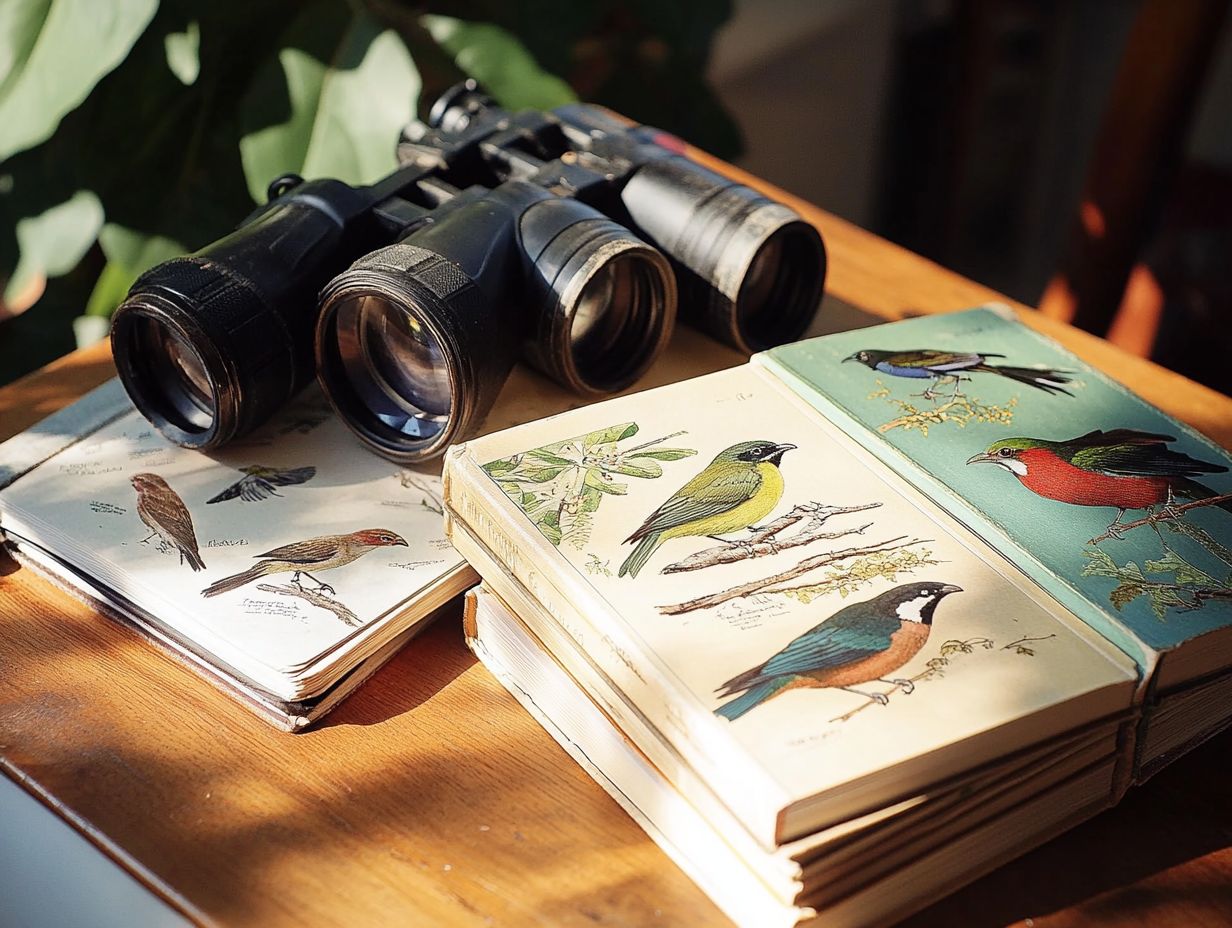
Using a field guide for bird conservation for rare and endangered birds is invaluable for both novice and seasoned birdwatchers. This guide offers user-friendly identification techniques and comprehensive information on various species.
It includes detailed photographs and informative captions that elevate your birdwatching experience. This allows you to fully appreciate the beauty and diversity of these unique avian wonders.
To make the most of this resource, take time to familiarize yourself with the layout of the guide. Pay special attention to how species are organized by characteristics such as size, color, and habitat.
Sharpen your identification skills by focusing on key features like beak shape, plumage patterns, and vocalizations. Understanding range maps will enable you to pinpoint species geographically.
This information provides valuable context about where to find certain birds during different seasons.
By integrating photographs and illustrations into your field observations, you enrich your understanding and deepen your appreciation for the delicate balance of nature all around you.
7. Tips for Birdwatching and Identifying Rare and Endangered Birds
Birdwatching can be an exhilarating pursuit. Focusing on rare and endangered species can significantly enhance your experience as you observe their unique behaviors and seasonal changes.
Whether you re just starting out or you ve been at it for a while, mastering these strategies is essential for successful bird identification.
To boost your chances of spotting those elusive species, think about visiting locations renowned for their rich bird diversity. These places are particularly vibrant during migration seasons when these birds are more likely to make an appearance.
Pay attention to specific times of the day. Early mornings and late afternoons tend to be prime for bird activity, offering you the best opportunities for sightings.
Investing in good binoculars can elevate your viewing experience. This allows you to scrutinize details without disturbing these sensitive creatures.
And don t underestimate the power of a reliable field guide. It can simplify the process of distinguishing between similar species, turning identification from a challenge into a rewarding adventure.
8. Top 10 Rare and Endangered Birds to Look Out For
When you embark on a birdwatching adventure, check out this curated list of stunning species to watch for! Knowing the top 10 rare and endangered birds to seek out can elevate your experience and deepen your appreciation for avian diversity, especially in North America.
This list features species that are not only visually stunning but also highlight the conservation challenges many birds face today.
Understanding the unique features and specific habitats of these birds makes spotting them an exhilarating pursuit. Each bird on this list carries a captivating story, revealing their beauty and the urgent need for conservation efforts.
Some flaunt striking colors, while others exhibit remarkable behaviors or adaptations. By familiarizing yourself with their distinct characteristics, you can truly appreciate their value and the critical roles they play in their ecosystems.
Being aware of their conservation status often ignites meaningful discussions about the environmental issues threatening their survival. This fosters a deeper connection between you and the natural world.
9. How to Report Sightings of Rare and Endangered Birds
Reporting sightings of rare and endangered birds is a vital contribution to conservation efforts. It provides essential data for researchers and conservationists. As a citizen scientist, you play a crucial role in monitoring populations and gaining insights into the behaviors and habitats of these remarkable species.
To effectively communicate your observations, you can leverage various platforms such as eBird, iNaturalist, and local conservation websites. These resources make it seamless to log and share your findings.
Each report you submit helps build a comprehensive dataset that researchers can analyze to identify trends in bird populations, migratory patterns, and the effects of climate change.
By sharing these sightings, you not only contribute to the field of ornithology (the study of birds) but also raise awareness about conservation challenges.
Your participation in these reporting initiatives enables the community and fosters a deeper appreciation for the importance of biodiversity and habitat preservation.
10. Resources for Learning More About Rare and Endangered Birds
You’ll find a treasure trove of resources for diving deeper into the world of rare and endangered birds. From comprehensive field guides to online databases and specialized educational programs, these tools offer invaluable insights into species identification, conservation efforts, and the rich natural history of these extraordinary creatures.
Explore curated websites dedicated to bird conservation to enhance your understanding. These platforms showcase exciting articles and research papers, along with interactive tools that track bird populations globally.
Organizations such as the Audubon Society and the Royal Society for the Protection of Birds actively engage the public. They present thrilling opportunities for you to get involved through volunteering and advocacy.
A thoughtfully selected range of thought-provoking books can spark your passion and arm you with practical knowledge, essential for your local conservation efforts.
By tapping into this diverse array of resources, you can transform into an informed advocate, contributing meaningfully to the vital cause of protecting our feathered friends.
Why Is It Important to Protect Rare and Endangered Birds?
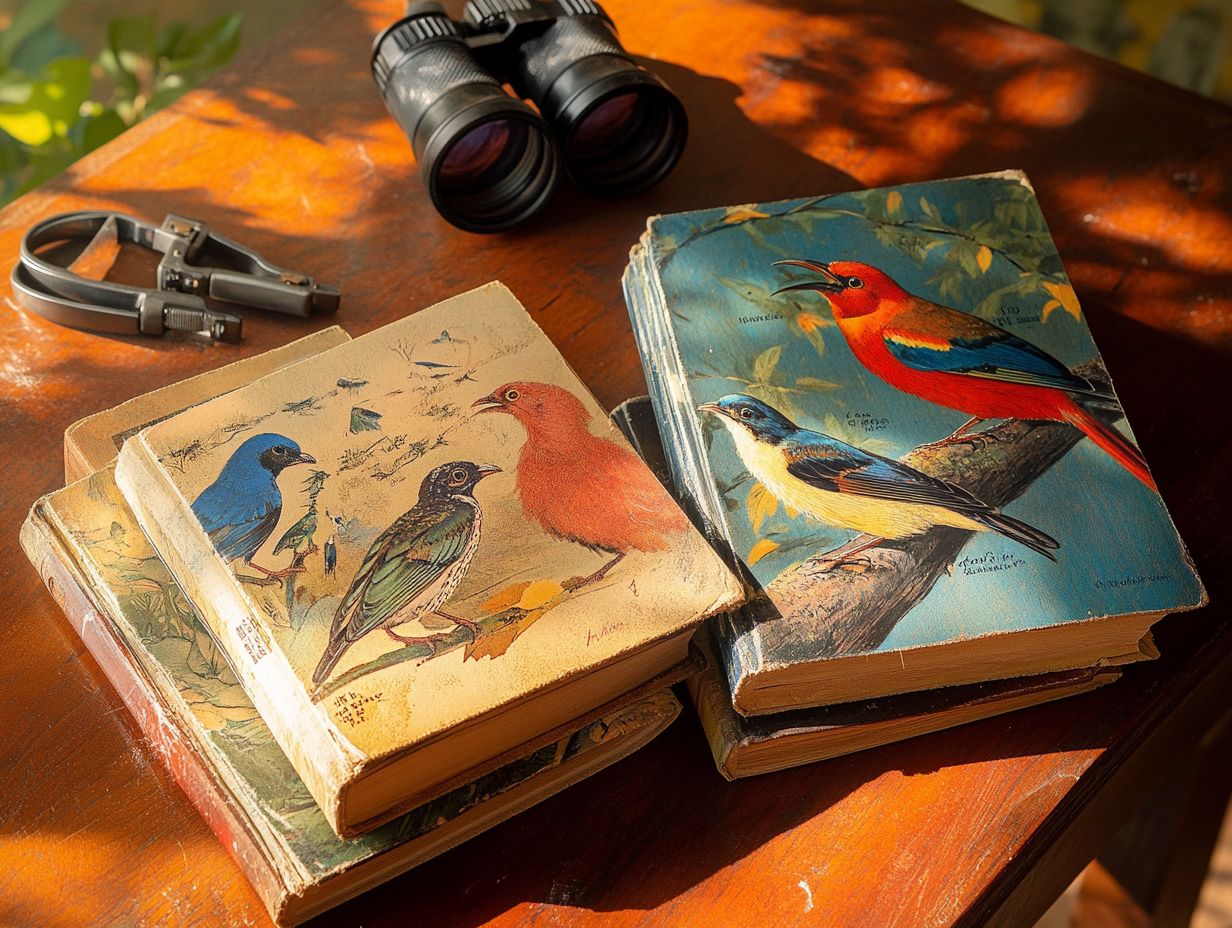
Protecting rare and endangered birds is crucial for maintaining biodiversity and ecological balance. These species often play critical roles in their ecosystems, providing essential services like pollination and pest control.
The loss of these birds could trigger a chain reaction affecting wildlife and habitats, emphasizing the need for effective conservation strategies to safeguard their future.
The intricate web of life depends on each species. When rare birds disappear, it disrupts vital interactions among flora and fauna. For example, the passenger pigeon s extinction fundamentally altered forest dynamics, as it once played a significant role in seed dispersion.
Ethically, humanity has a responsibility to protect these vulnerable creatures and their habitats. Losing such unique bird populations erodes our natural heritage.
Engaging communities in bird conservation efforts fosters a sense of stewardship. This promotes education and involvement that uphold the health of our ecosystems for future generations.
What Are the Most Common Threats to Rare and Endangered Birds?
The threats to rare and endangered birds are significant and multifaceted, including habitat loss, climate change, pollution, and invasive species. Recognizing these challenges is essential for crafting effective conservation strategies that address the core issues facing these vulnerable species.
Habitat loss stands out as a primary concern, often driven by urban development, agriculture, and deforestation. This destruction strips away critical nesting areas and food sources. For instance, the California Condor has faced severe population declines largely due to habitat encroachment.
Climate change complicates the landscape by disrupting migratory patterns and breeding cycles. Species like the Arctic Tern are grappling with these rapid changes.
Pollution, especially from pesticides and plastic waste, poses dire risks. The critically endangered Albatross, for example, suffers from the ingestion of plastics and harmful contaminants.
Invasive species add complexity by disrupting local ecosystems. The predation of native birds by feral cats has dramatically reduced their populations, threatening their very existence. Addressing these issues is imperative for the future of these remarkable avian species.
Join the movement to protect our feathered friends today!
What Can Individuals Do to Help Protect Rare and Endangered Birds?
You can truly make a difference in protecting rare and endangered birds! Support conservation groups, join citizen science projects, and raise awareness about these amazing species.
By adopting responsible birdwatching practices and advocating for sound environmental policies, you play an essential role in conserving avian diversity.
Joining local conservation groups is an effective approach. These groups often organize clean-up drives and habitat restoration activities. Your hands-on involvement allows you to take direct action in safeguarding bird populations.
Embracing sustainable practices like reducing plastic use, creating bird-friendly gardens, and incorporating native plants helps create safe places for these species.
Engaging in educational outreach programs is vital. By volunteering at schools or community centers, you can inspire the next generation to appreciate and protect these magnificent creatures.
Collaborating with local businesses helps amplify your efforts, paving the way for lasting change.
What Are Some Lesser-Known Rare and Endangered Birds?
While you may know about high-profile rare and endangered birds, it’s crucial to recognize lesser-known species that also need your attention and protection. These birds play unique ecological roles and face distinct conservation challenges.
Take the Spix s Macaw, for example. This striking blue parrot, once thought extinct in the wild, reminds us of the importance of habitat protection and reintroduction initiatives. There s also the K k p , a flightless parrot from New Zealand facing predation and habitat degradation, underscoring the fragile balance within ecosystems.
The California Condor, with its impressive wingspan, continues to battle habitat loss and lead poisoning.
Protecting these remarkable birds is crucial for their survival and maintaining the ecological balance and health of their environments. Every bird plays a critical role, and your awareness and advocacy can make a significant difference in their future.
How Can Citizen Science Projects Contribute to the Conservation of Rare and Endangered Birds?
Citizen science projects offer an extraordinary opportunity to contribute to the conservation of rare and endangered birds. By participating, you can assist in data collection, monitor populations, and study behaviors. All of this informs effective conservation strategies.
Take the Great Backyard Bird Count, for example. It invites you to observe and report bird sightings, creating a rich and comprehensive snapshot of bird diversity and population trends over time.
Similarly, Project FeederWatch encourages you to count the birds visiting your feeders. This provides valuable data that scientists use to assess bird health and migration patterns.
By promoting awareness and fostering a sense of stewardship, these projects cultivate a collective responsibility for wildlife conservation. Your active involvement enhances the reach and effectiveness of conservation efforts, underscoring the vital role of community participation in preserving avian species.
What Are the Long-Term Effects of Losing Rare and Endangered Bird Species?
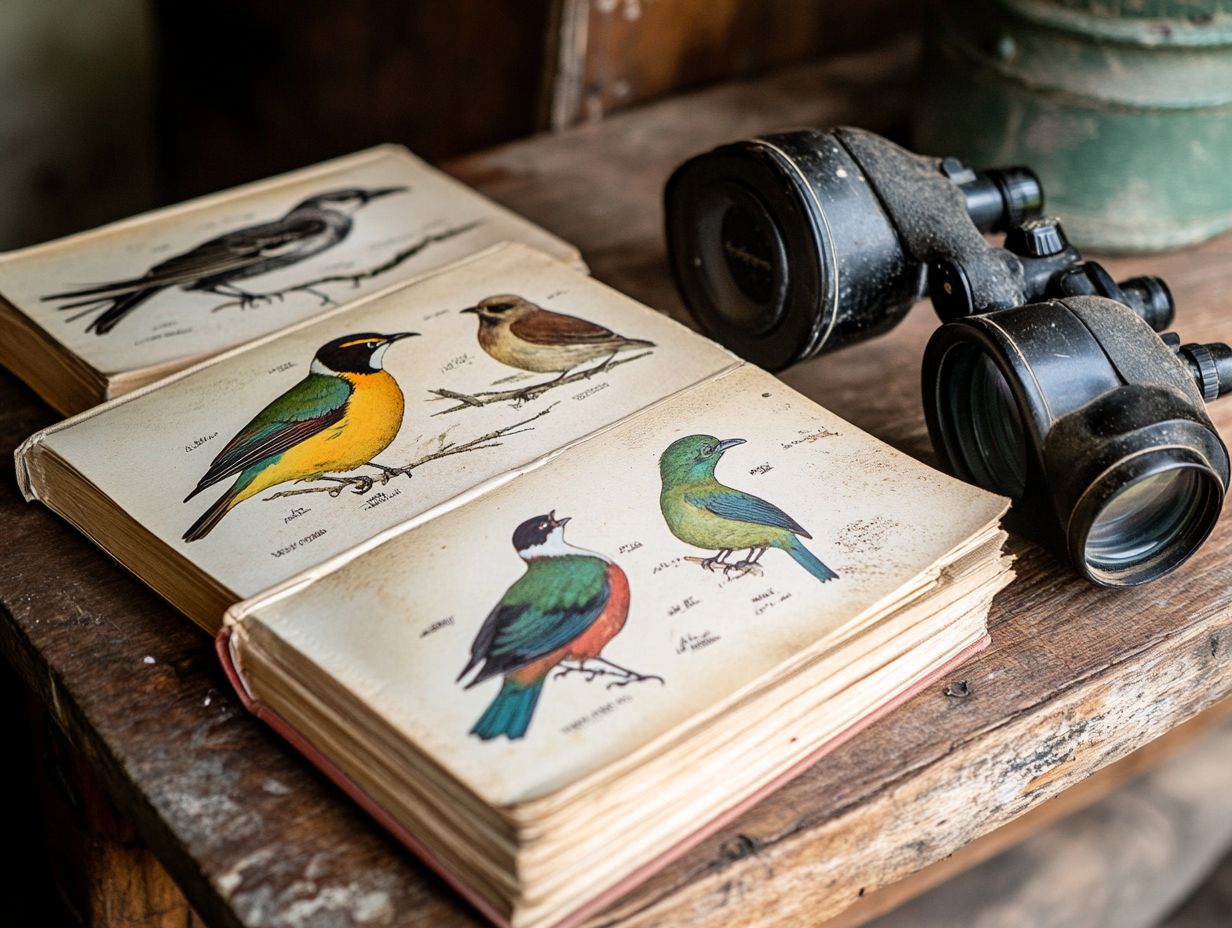
The long-term repercussions of losing rare and endangered bird species extend far beyond the immediate loss of biodiversity. They influence ecosystem health and social dynamics within human communities.
These birds often hold vital roles in their ecosystems. Their absence can lead to significant shifts in wildlife interactions and habitat stability.
Consider this: birds are essential pollinators and seed dispersers, critical for the reproduction of various plant species. In tropical rainforests, for example, the decline of birds like the (K kako) has been linked to a noticeable reduction in native tree growth. This impacts countless organisms that depend on these trees for shelter and food.
Data indicates that the extinction of such avian species can disrupt pest control. This results in unchecked insect populations that threaten agricultural practices and human livelihoods.
The cascading effects of these losses remind us of how wildlife and humans are interconnected. This highlights our urgent mission to conserve these incredible birds!
Frequently Asked Questions
What are field guides for rare and endangered birds?
Field guides for rare and endangered birds are resources that provide detailed information, illustrations, and photographs of these bird species. They help birdwatchers and researchers identify and learn about these birds in their natural habitats, making them essential tools for bird conservation.
Why are field guides important for rare and endangered birds?
Field guides provide essential information on the behavior and habitat requirements of rare and endangered birds. For those interested in birdwatching, navigating the world of birds is crucial for conservation efforts and ensuring the survival of these vulnerable species.
Are field guides only for experienced birdwatchers?
No, field guides are designed for everyone. They include key identification features and habitat information that can help anyone learn about rare and endangered birds, making them an invaluable resource for birdwatchers. Check out Field Guides: Your Birdwatching Companion for more information.
Do field guides cover all rare and endangered bird species?
No, field guides may not cover all species, as new ones are constantly being discovered. Some may not have enough data for accurate identification. It’s important to use multiple resources and consult experts for the most up-to-date information.
Can I use field guides for rare and endangered birds during any season?
Field guides can be used year-round, but some species may migrate or have different plumage during breeding seasons. For a deeper understanding, consider exploring field guides that enhance your birdwatching knowledge or consult local birding organizations for more information.
Are online resources a good substitute for field guides for rare and endangered birds?
Online resources can supplement field guides, but they may not always be reliable. For the most accurate and comprehensive information on rare and endangered birds, using a combination of both print resources and field guides is best.



